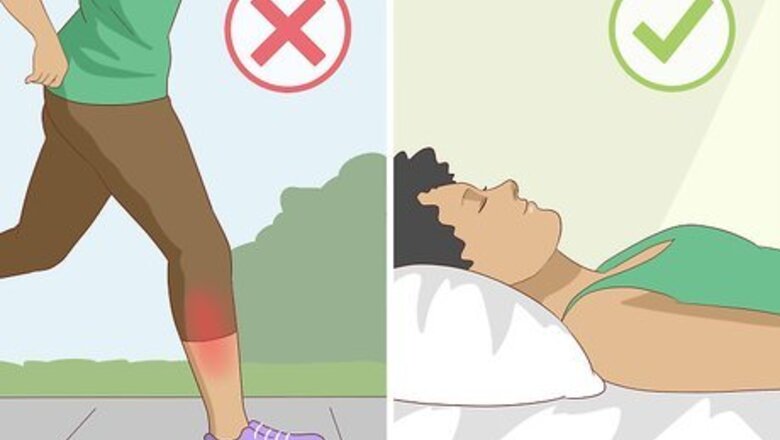
views
Relieving Pain

Rest as much as possible. The best thing that you can do when you start having leg pain is to rest. Stop whatever you are doing and get off of your feet for a few hours. If you have a physical job, then you may need to take some time off from work. Talk to your doctor about getting a doctor’s note to excuse you. Consider taking a day or two off from your normal exercise routine. If you usually exercise every day, then you may want to take a day or two off until your leg is feeling a bit better.
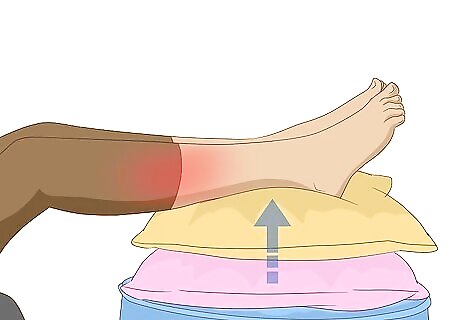
Elevate your leg. Elevating your leg can help to reduce swelling and it may also help to relieve some of the pain. If you notice that your leg is swollen, then you may want to elevate your leg. If you are sitting, then you can put your feet and legs up on an ottoman with a couple of pillows under your legs, or you can lie in bed and place a couple of pillows under your legs and feet.
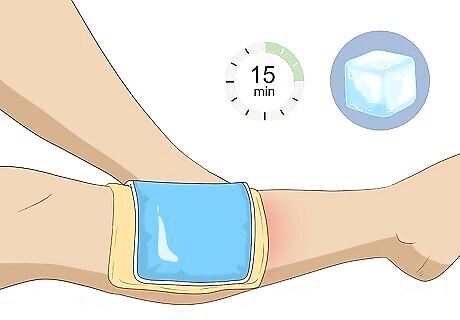
Ice your leg. Using an ice pack can help to numb the pain in your leg. Do not put ice directly on your skin. Wrap the ice pack in a thin towel and then place the pack on the affected area of your leg. You can leave the ice pack in place for up to 15 minutes, but then you should give your leg at least a one hour break from the cold. Try icing the area for 5-10 minutes, then repeat it again an hour later. Do this several times a day. The ice will help reduce inflammation in your leg, which is especially helpful if your leg pain is due to arthritis or some type of injury.
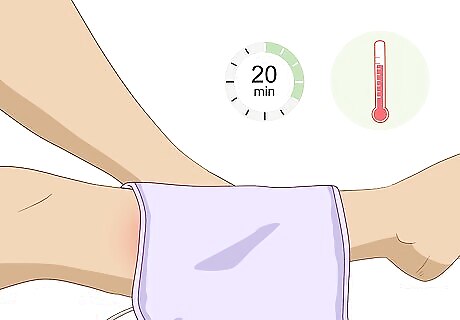
Warm up your legs with some soothing heat. Heat can also help to get rid of leg pain if the pain is caused by muscle pain or tension. Try using a heating pad on your legs to help soothe sore muscles. Don’t leave the heating pad on your leg for more than 20 minutes at a time or you may overheat your skin.
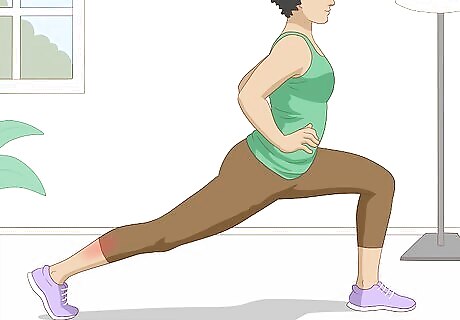
Use gentle stretches to help ease muscle tension. If you think that the pain in your leg is due to muscle cramps or muscle tightness, then doing some gentle stretching may help you feel better. Try one of the following stretches to help loosen up tight muscles: Lunge. Stand with your feet shoulder width apart and take a big step forward with one foot. Keep the other foot behind you. Both feet should be facing forward. Your front knee should be bent at a 90° angle and your back leg should stay straight. Hold this stretch for about 10 seconds and then do the stretch on the other side. Forward bend. Stand with your feet shoulder width apart and slowly begin to bend forward, keeping your knees straight, but not locked. If you can touch your calves or your toes, then do so and hold the stretch there for the count of 10. Even if you can only reach your thighs or your knees, you should still feel a stretch in the backs of your legs. Quad stretch. To do a quad stretch, stand near a wall or sturdy chair and place one hand on the wall or chair for balance. Then, bend one of your legs and bring your foot up towards your butt. Grab your toes with your hand if you can and hold the stretch. If you cannot reach your foot, then you can also try placing your toes against the wall to help stretch your quadriceps.
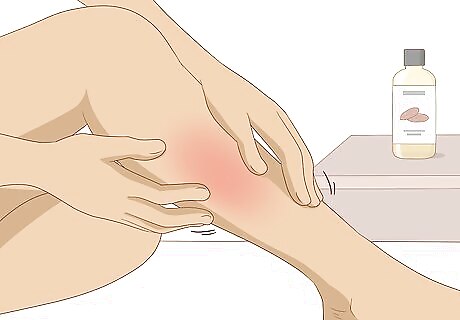
Massage your muscles. After stretching, you may also find it helpful to massage your leg muscles. Try using a bit of massage oil to make it easier to massage your leg muscles. Use long strokes and firm pressure to help relieve some of the tension in your legs. Getting a massage from a professional massage therapist may also help to soothe leg pain caused by extremely tight muscles. You can also use a foam roller to massage your leg muscles. Place it beneath the sore area and roll your leg over the roller for 5 to 10 minutes.
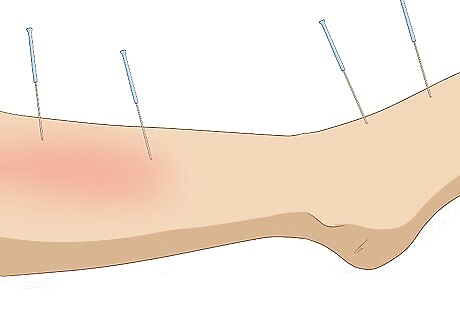
Find an acupuncturist. Acupuncture may help to relieve leg pain in some situations. If you experience muscle spasms or inflammation along with your leg pain, then acupuncture may be an effective treatment. Try talking to a professional acupuncturist to find out if acupuncture may be effective for you. Consider choosing an acupuncturist who focuses primarily on muscular sports medicine or orthopedic issues, as they'll be more familiar with treating pain in the different parts of your body. Be sure to choose a licensed acupuncturist. For instance, you might choose a doctor of Oriental medicine, or you may choose a practitioner with the credentials LAC (licensed acupuncturist) or NCCAOM (National Certification Commission for Acupuncture and Oriental Medicine).
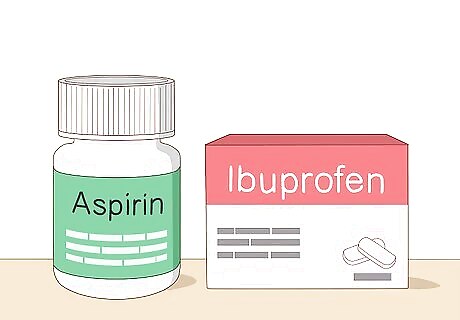
Take an over-the-counter pain killer. If you are still in pain after using other methods of relieving your pain, then you can try taking an over-the-counter pain medicine to help relieve some of the pain. For example, you can try taking acetaminophen, ibuprofen, or aspirin. Make sure that you read the product instructions and follow them. If taking an over-the-counter pain reliever does not help, then you should call your doctor. If your pain is related to inflammation, such as arthritis, then taking an NSAID such as ibuprofen may be the best choice because NSAIDs help to reduce inflammation as well as pain.

Get more magnesium, calcium, and potassium in your diet. These nutrients are crucial for maintaining a good electrolyte balance and preventing muscle cramps. To improve your intake of these nutrients, make sure that you eat plenty of fruits, vegetables, whole grains, low-fat dairy products, lean meats, and nuts and legumes. One way that you can ensure that you are getting plenty of calcium, magnesium, and potassium is by following the DASH diet. This diet focuses on foods that are low in sodium and high in calcium, magnesium, and potassium.
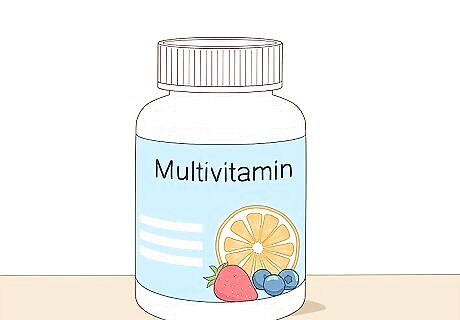
Try adding a multi-vitamin. If you are want to be sure that you are getting enough of the vitamins and minerals that you need to stay healthy and keep leg cramps away, then you may also want to consider taking a multivitamin. Choose a multivitamin that provides 100% of your daily requirement of vitamins and minerals.
Identifying Causes of Leg Pain
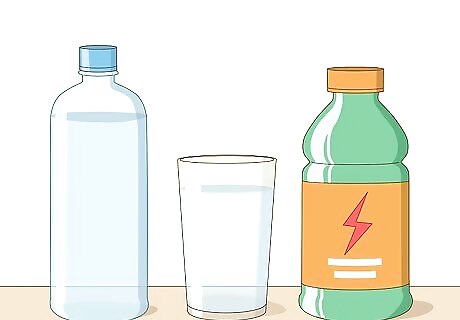
Stay hydrated. If you are dehydrated or if your minerals are out of balance, then you may experience some muscle cramping. This is a common problem and you can often solve it by drinking more water and including drinks that contain electrolytes. Make sure that you are drinking at least 8 8 fl oz (240 mL) glasses of water per day.
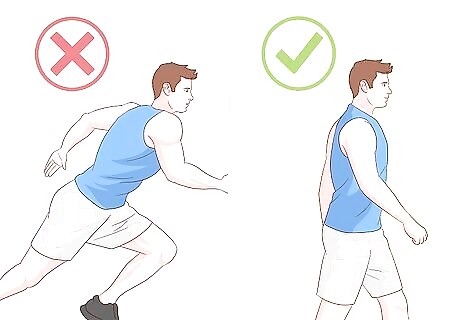
Lighten your workouts. Intense, prolonged exercise can cause muscle pain, but you may not experience any muscle pain until a few days after your workout. Try to lighten up your workouts in the future to help prevent leg pain. Keep in mind that you may even experience muscle pain from light exercise if your body does not get much exercise, so it is good to start slow and allow your body enough time to get used to its new activity level. Making sudden changes in your activity level, like increasing the number of days you exercise or bumping up the distance you run every day, can put you at risk of developing shin splints. This is a painful inflammation around your tibia (shin bone).

Inspect yourself for injuries. Injuries, such as torn muscles, tendons, and sprains, can cause muscle pain as well. If you were injured, then you might have experienced some sharp, intense pain as a result of doing something. The pain can linger for days, weeks, or even months after the initial injury. Make sure that you see a doctor if you think that you may have been injured.
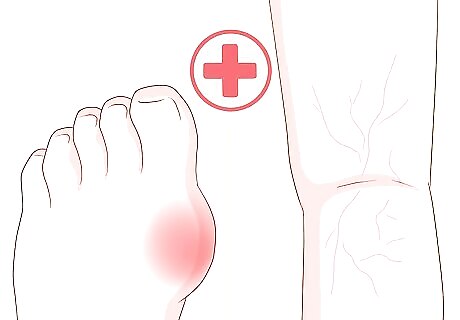
Look for circulation issues. Circulation issues can also cause leg pain. If you have a condition such as gout, diabetes, atherosclerosis, or varicose veins, then this might be causing your leg pain. If you have or suspect that you have one of these conditions, then see a doctor as soon as possible to get treatment. If the problem is your circulation, then compression stockings may help. Check with your doctor to see if compression stockings might be a good option for you. If you often notice that your feet and toes feel painful and tingly, your calf muscles are weak, and you get ulcers on your feet and toes, then peripheral artery disease (PAD) may be the cause of your leg pain.
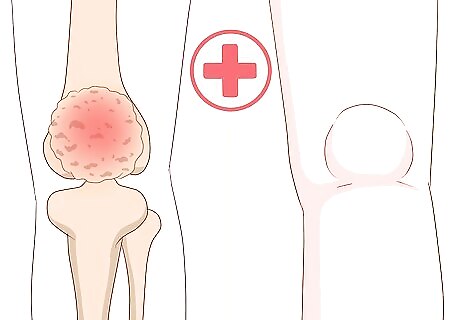
Consider other less common reasons why your leg may hurt. Leg pain may also be caused by some less common conditions that are more difficult to detect. For example, bone cancer, cysts, and sciatica can also cause your legs to hurt. Keep in mind that you will need to see a doctor to determine if any of these conditions may be causing your leg pain. Sciatica pain starts in the lower back and shoots down the leg. Take an anti-inflammatory and rest as much as possible until you're able to see your doctor.
Seeing a Doctor
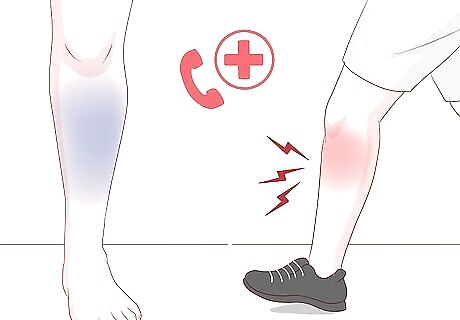
Schedule an appointment with your doctor for a diagnosis. If home care strategies do not help your leg pain, then you should make an appointment with your doctor for as soon as possible. In some cases, leg pain may be a sign of a serious problem. Call your doctor right away if your: Leg looks black and blue Leg is cold and pale Pain is more intense when you move or exercise Leg looks red and swollen and/or you have a fever Your legs are swollen and you are having trouble breathing

Describe the location, type, and characteristics of your leg pain. Your doctor will ask you lots of questions about the type of pain you are having. Think about the characteristics of your pain before your appointment to help your doctor make the best diagnosis. Some things to consider include: Where the pain is at in your leg (upper, lower, front, back, etc.) What kind of pain you are feeling (sharp, dull, stabbing, pain that comes and goes, etc.) What makes the pain feel worse and what makes it feel better Any other symptoms you are having
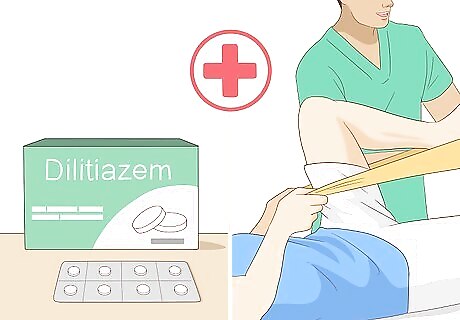
Ask about treatment options. After your doctor has diagnosed the problem, they will give you some options for how to deal with the problem. In some cases, physical therapy may be necessary. Ask your doctor about other options if you are not sure about the ones that you have been given. Your doctor may prescribe you medications for leg cramping, such as calcium channel blockers, diltiazem and verapamil, and other medications such as gabapentin.

















Comments
0 comment